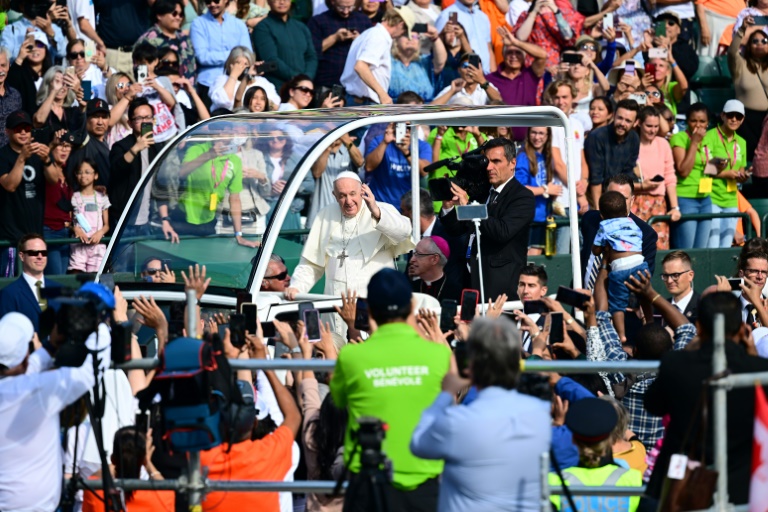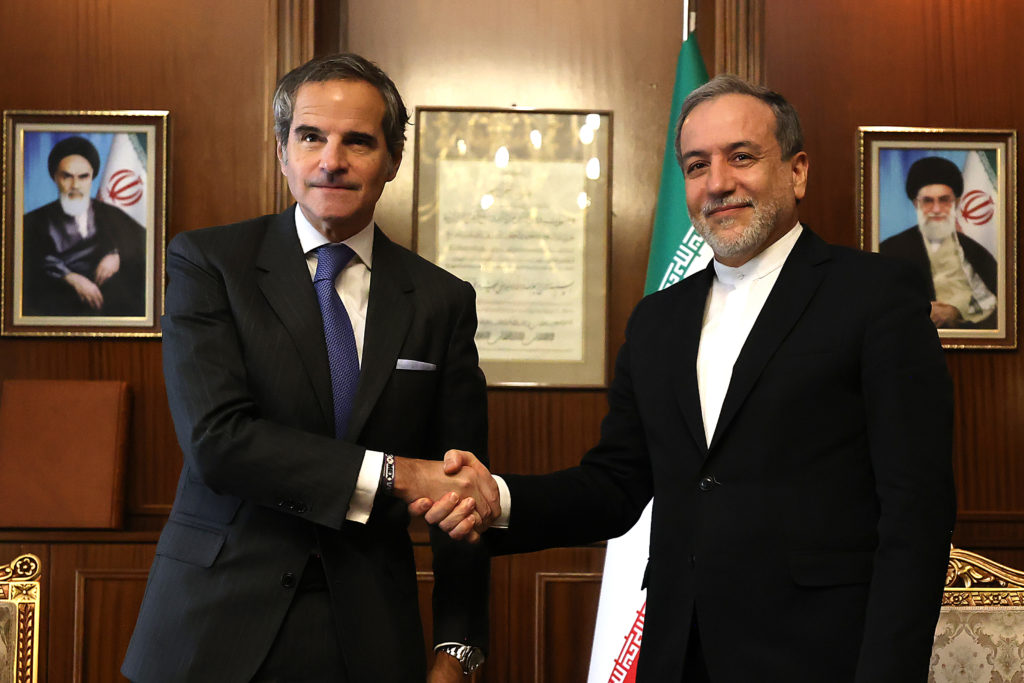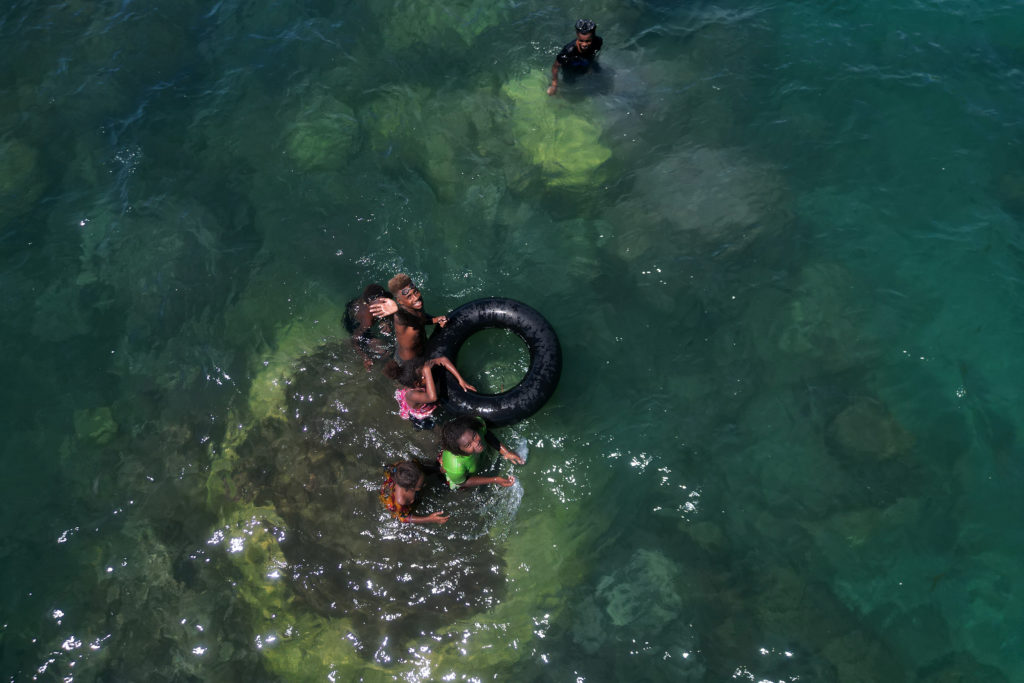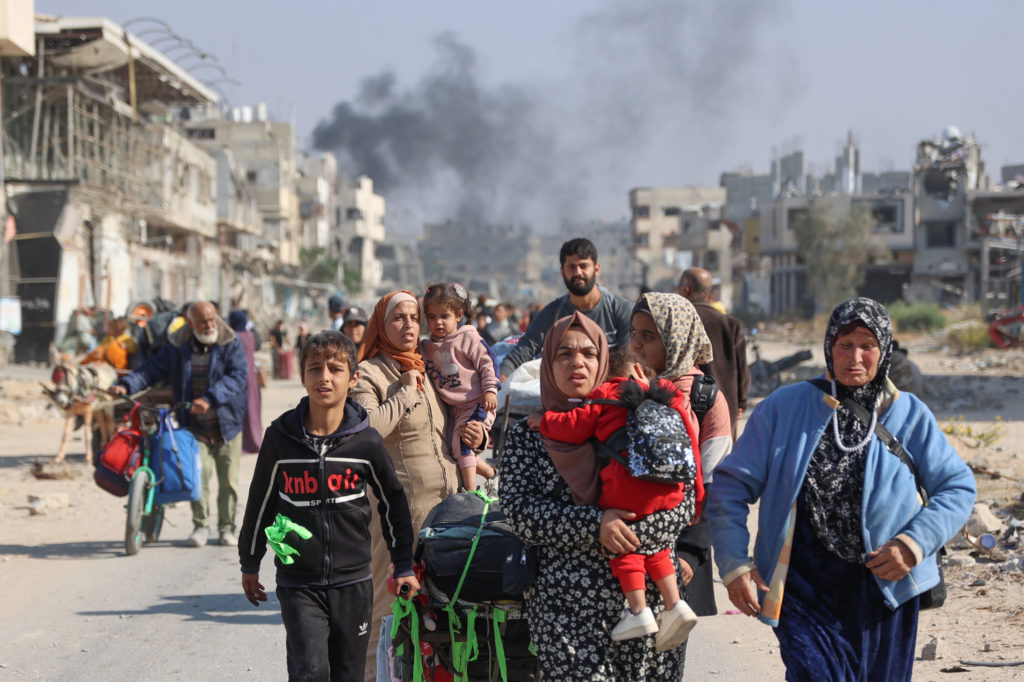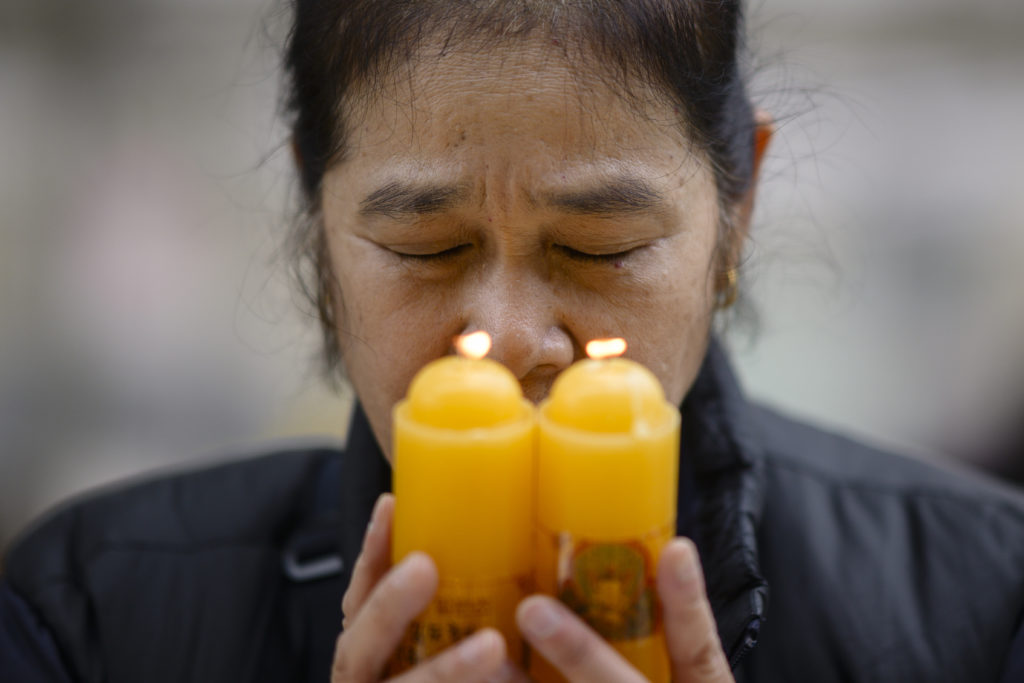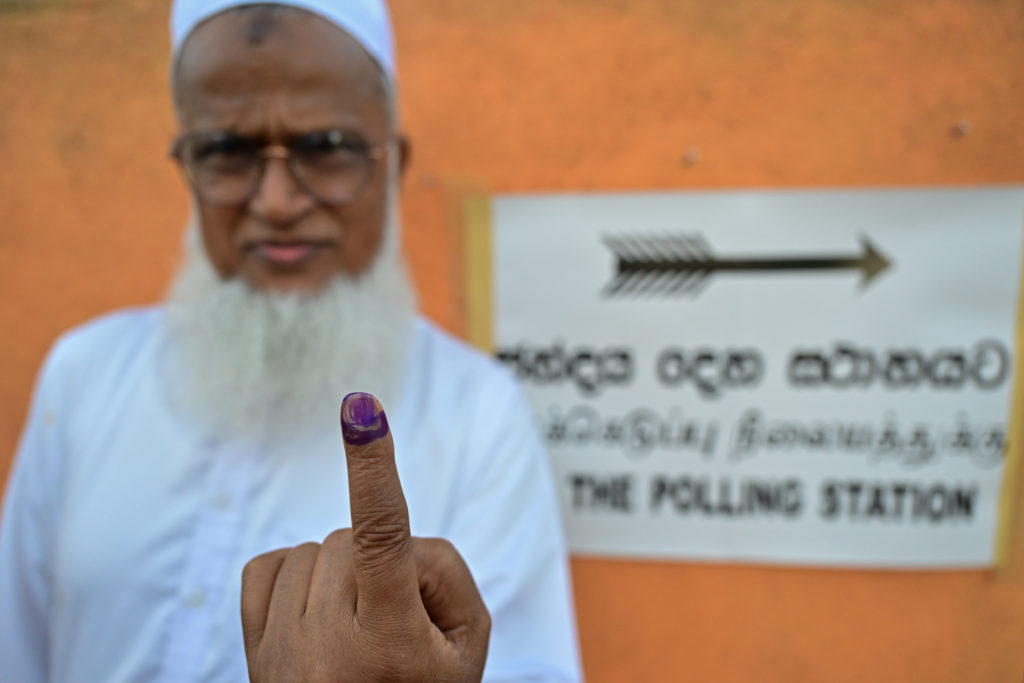Pope Francis on Tuesday delivered an open-air mass before tens of thousands of people thronging a stadium in western Canada, a day after making a landmark apology for the abuse of Indigenous children at Catholic-run schools.
The 85-year-old pontiff waved and smiled as he made his way in the popemobile through the venue in Edmonton, in the province of Alberta, pausing several times to kiss babies handed up to him through the crowds.
Francis then delivered his homily in Spanish, in one of the largest open-air events of his visit, praying for a “future in which the history of violence and marginalization suffered by our Indigenous brothers and sisters is never repeated.”
Security was tight as people took their seats under sunny skies ahead of the service. Officials said some 50,000 people attended.
Traditional music filled the air, while Indigenous people in the crowd were recognizable by their orange shirts — intended to symbolize the failed policy of forced assimilation they endured in the country’s infamous residential schools.
Some held a banner reading “Every child matters,” while others wore traditional headdresses. Francis himself wore a garment that officials said had been inspired by Indigenous art.
In the first major address of his visit on Monday, to a gathering of Indigenous people in the community of Maskwacis, south of Edmonton, Francis offered a long-awaited apology to Canada’s First Nations, Metis and Inuit people for the “evil” inflicted on them for decades.
“I am sorry,” he said, citing the “cultural destruction” and the “physical, verbal, psychological and spiritual abuse” of children over nearly a century at the schools.
After Tuesday’s mass, the leader of the world’s 1.3 billion Catholics is expected to continue what he has described as a “penitential” journey, travelling to Lac Ste Anne, some 80 kilometers (50 miles) west of Edmonton, for a liturgical celebration at one of North America’s most important pilgrimage sites.
St. Anne, whose feast day is Tuesday, was the grandmother of Jesus in the Catholic tradition.
Every year since the end of the 19th century, thousands of pilgrims mainly from Canada and the United States have come to bathe and pray in the healing waters, according to Indigenous rites.
– ‘Path together’ –
From the late 1800s to the 1990s, Canada’s government sent about 150,000 children into 139 residential schools run by the Church, where they were cut off from their families, language and culture.
Many were physically and sexually abused, and thousands are believed to have died of disease, malnutrition or neglect.
Monday’s apology by the pope for the role Church members had played in the abuse had a powerful impact on many, leaving survivors feeling overwhelmed and leaders praising it as historic, even as some warned it was only a first step.
“Where do you go from there?” David Henderson, from the Manitoba First Nations community, told AFP in Edmonton. “It’s still going to take a lot of healing.”
Others were more critical.
“I feel it would have meant more to a lot of people if it came from the heart without reading a sheet of paper,” said Caroline L. Bruyeri, a former student of one of the schools.
Henry Swanpy, of the Sagkeeng First Nations community, said he was “disappointed” the pope had not delivered his apology directly in English, rather than in Spanish repeated through an interpreter.
“He should have learned to apologize in our language,” Swanpy said.
Since May 2021, more than 1,300 unmarked graves have been discovered at the sites of the former schools, sending shockwaves through Canada — which has slowly begun to acknowledge this long, dark chapter in its history.
More than 4,000 children have been identified as dying in the schools, but the true toll is estimated to be at least 6,000.
The abuse created trauma for generations.
Following a July 27-29 visit to Quebec City, Pope Francis — who often uses a wheelchair due to knee pain — will end his trip in Iqaluit, capital of the northern territory of Nunavut and home to the largest Inuit population in Canada.
There he will meet again with former residential school students, before returning to Italy.

